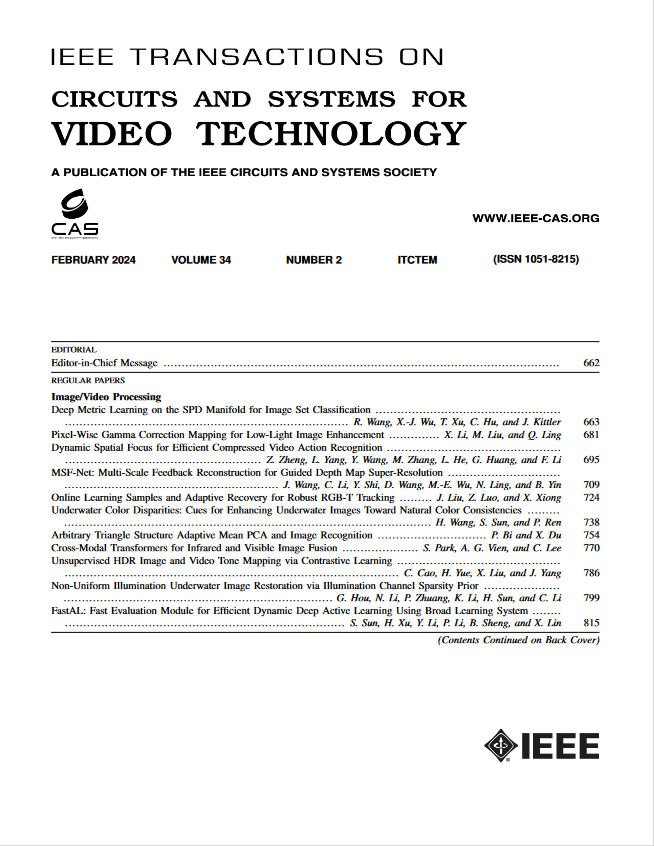Polarity-Focused Denoising for Event Cameras
IF 8.3
1区 工程技术
Q1 ENGINEERING, ELECTRICAL & ELECTRONIC
IEEE Transactions on Circuits and Systems for Video Technology
Pub Date : 2024-12-17
DOI:10.1109/TCSVT.2024.3519430
引用次数: 0
Abstract
Event cameras, which are highly sensitive to light intensity changes, often generate substantial noise during imaging. Existing denoising methods either lack the speed for real-time processing or struggle with dynamic scenes, mistakenly discarding valid events. To address these issues, we propose a novel dual-stage polarity-focused denoising (PFD) method that leverages the consistency of polarity and its changes within local pixel areas. Whether due to camera motion or dynamic scene changes, the polarity and its changes in triggered events are highly correlated with these movements, allowing for effective noise handling. We introduce two versions: PFD-A, which excels at reducing background activity (BA) noise, and PFD-B, which is designed to address both BA and flicker noise. Both versions are lightweight and computationally efficient. The experimental results show that PFD outperforms benchmark methods in terms of the SNR and ESR metrics, achieving state-of-the-art performance across various datasets. Additionally, we propose an FPGA implementation of PFD processes that handles each event in just 7 clock cycles, ensuring real-time performance. The codes are available at事件相机的极性聚焦去噪
事件相机对光强变化高度敏感,在成像过程中经常产生大量噪声。现有的去噪方法要么缺乏实时处理的速度,要么难以处理动态场景,错误地丢弃有效事件。为了解决这些问题,我们提出了一种新的双级极性聚焦去噪(PFD)方法,该方法利用极性的一致性及其在局部像素区域内的变化。无论是由于相机运动还是动态场景变化,极性及其在触发事件中的变化都与这些运动高度相关,从而允许有效的噪声处理。我们介绍了两个版本:PFD-A,它擅长于降低背景活动(BA)噪声,以及PFD-B,它旨在解决BA和闪烁噪声。这两个版本都是轻量级且计算效率高的。实验结果表明,PFD在信噪比和ESR指标方面优于基准方法,在各种数据集上实现了最先进的性能。此外,我们提出了PFD进程的FPGA实现,仅在7个时钟周期内处理每个事件,确保实时性能。代码可在https://github.com/shicy17/PFD上获得。
本文章由计算机程序翻译,如有差异,请以英文原文为准。
求助全文
约1分钟内获得全文
求助全文
来源期刊
CiteScore
13.80
自引率
27.40%
发文量
660
审稿时长
5 months
期刊介绍:
The IEEE Transactions on Circuits and Systems for Video Technology (TCSVT) is dedicated to covering all aspects of video technologies from a circuits and systems perspective. We encourage submissions of general, theoretical, and application-oriented papers related to image and video acquisition, representation, presentation, and display. Additionally, we welcome contributions in areas such as processing, filtering, and transforms; analysis and synthesis; learning and understanding; compression, transmission, communication, and networking; as well as storage, retrieval, indexing, and search. Furthermore, papers focusing on hardware and software design and implementation are highly valued. Join us in advancing the field of video technology through innovative research and insights.

 求助内容:
求助内容: 应助结果提醒方式:
应助结果提醒方式:


